Beyond the Sweater Drawer: Gardening In Layers for Autumn Color & Texture
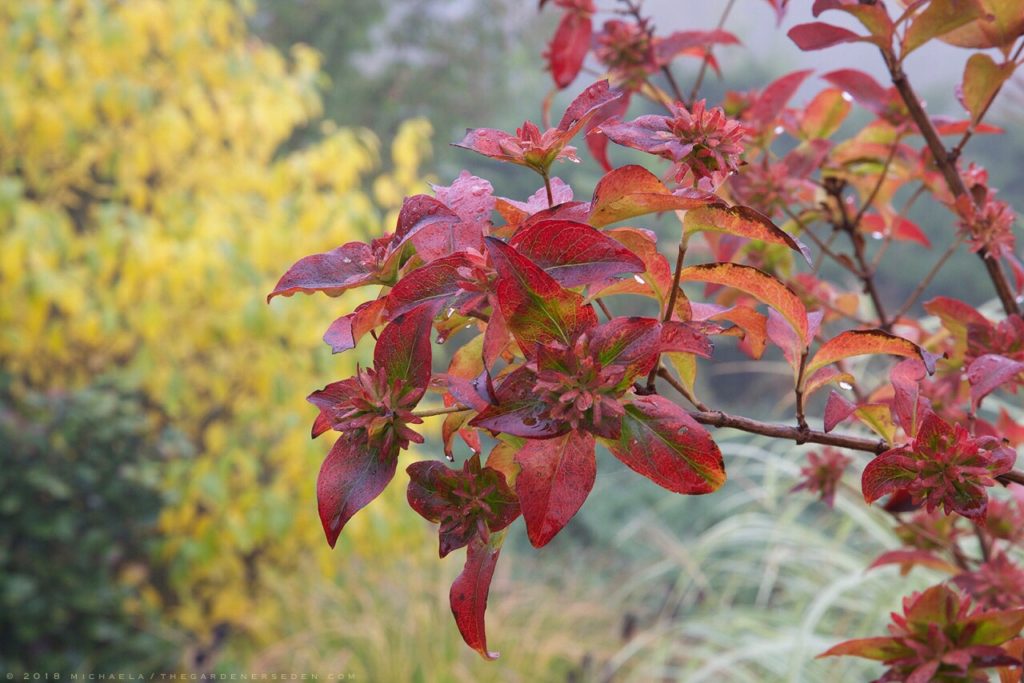 Stunning Abelia mosanensis, Backed Up by Lovely Lindera benzoin and Miscanthus sinensis ‘Variegatus’, Together in a Stellar Second Act. Â
Stunning Abelia mosanensis, Backed Up by Lovely Lindera benzoin and Miscanthus sinensis ‘Variegatus’, Together in a Stellar Second Act. Â
Getting dressed for October weather in New England usually involves a tank top, t-shirt, bright sweater and weatherproof jacket. As the season grows colder, this list grows to include colorful wool socks, hat, scarf, gloves and a stylish pair of warm boots. Eventually, I’ll put away the tank tops and t-shirts and pull on the long Johns before adding everything else. Our wardrobe colors and patterns may switch up but our bones remain the same.
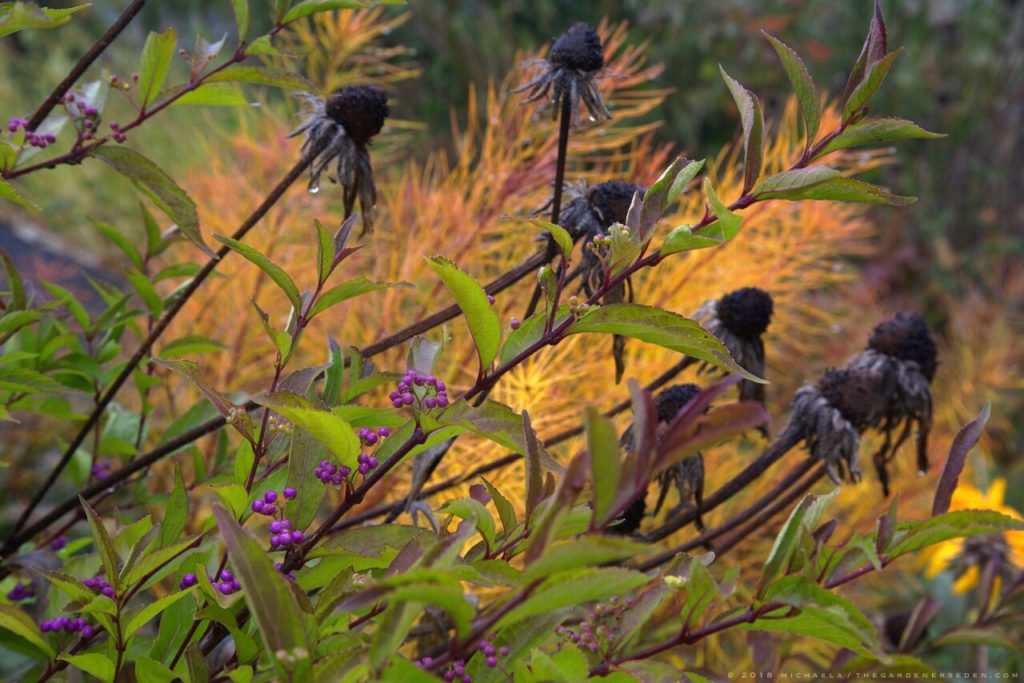 Callicarpa dichotoma, Rudbeckia hirta Stand Out Against Glowing Amsonia hubrichtii. Beauty to Brighten the Dreariest of Days.
Callicarpa dichotoma, Rudbeckia hirta Stand Out Against Glowing Amsonia hubrichtii. Beauty to Brighten the Dreariest of Days.
Once you know your plants, designing a garden for autumn isn’t much different from planning your fall wardrobe. When creating a planting plan for any season, I start with basic garden structure of trees and strubs (aka “the bones”), and then select perennials and annuals to flatter throughout the growing year. It’s important to consider how things will look in the big picture —just like standing in front of a long mirror and turning side to side, before you head out the door— as individual layers and details fade away and others appear or color up in changing weather.
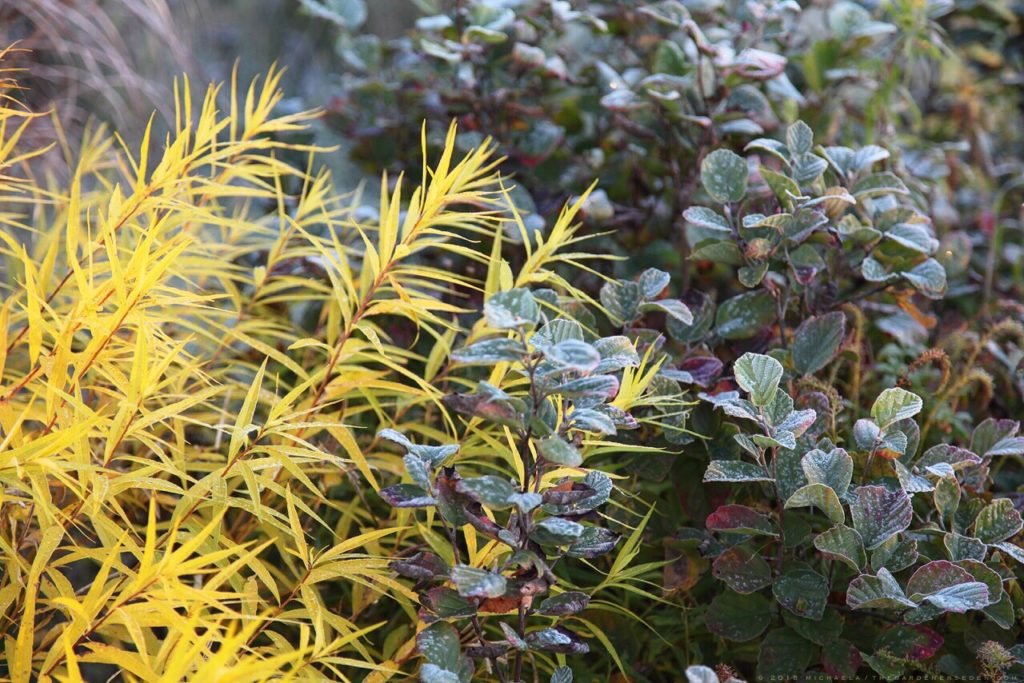 Amsonia illustris Shines Against Fothergilla ‘Mount Airy’s’ Frost-Kissed Leaves. This Pairing Gets Bolder in Late October, When the Witch Alder Glows Bright, Orange-Red
Amsonia illustris Shines Against Fothergilla ‘Mount Airy’s’ Frost-Kissed Leaves. This Pairing Gets Bolder in Late October, When the Witch Alder Glows Bright, Orange-Red
A good understanding of color —how to work relationships between harmonious and complementary hues— comes in handy when designing a garden, as does a good mental database of plants and how their textures and appearances shift throughout the seasons. Certain leaves will morph from green to red, others will glow orange or gold, and some will just blacken and shrivel! As foliage fades, little details like berries, bark and seed pods really begin to matter; popping against the moody grey landscape and glistening in frost. Knowing what to cut back, and when, can make all the difference between a beautiful first frost and early winter blahs. When in doubt, leave it standing and make notes! You can always pull out the shears later. These are the elements of plant-driven design that fascinate and thrill me; familiarity with them will give you a great three, and even four-season landscape.
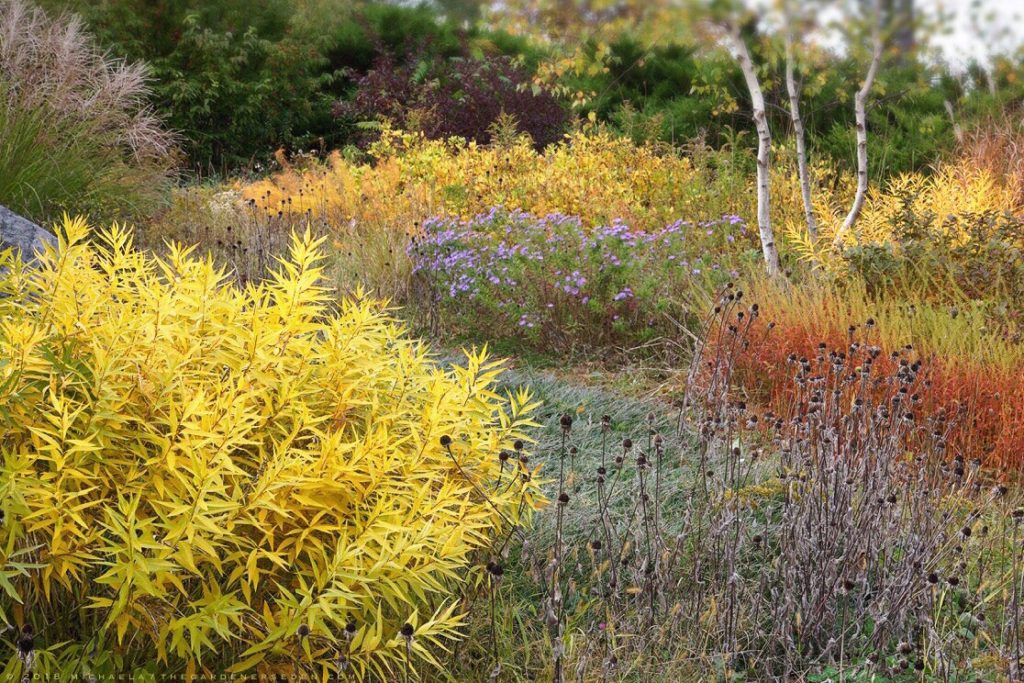 Layered Autumn Looks Go Way Beyond the Basic. This Meadow Walk Planting Design Features Trees, Shrubs, Perennials and Grasses for Depth. From Bottom Left: Amsonia illustris, Miscanthus sinensis ‘Morning Light’, Cornus kousa, Clethra alnifolia ‘Ruby Spice’, Aster oblongifolium ‘Raydon’s Favorite’, Betula papyrifera, Fothergilla ‘Mount Airy’, Persicaria amplexicaulis, Juniperus horizontalis and Rudbeckia hirta.Â
Layered Autumn Looks Go Way Beyond the Basic. This Meadow Walk Planting Design Features Trees, Shrubs, Perennials and Grasses for Depth. From Bottom Left: Amsonia illustris, Miscanthus sinensis ‘Morning Light’, Cornus kousa, Clethra alnifolia ‘Ruby Spice’, Aster oblongifolium ‘Raydon’s Favorite’, Betula papyrifera, Fothergilla ‘Mount Airy’, Persicaria amplexicaulis, Juniperus horizontalis and Rudbeckia hirta.Â
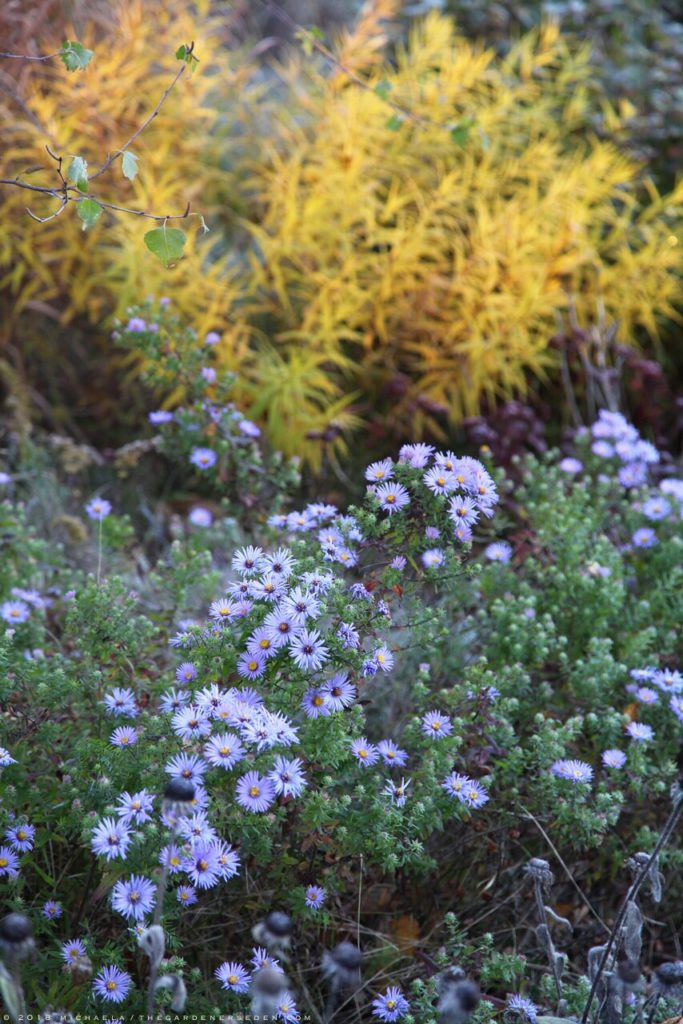 Blue-Violet Aromatic Asters (A. oblongifolius), Complement Beautifully with Golden Amsonia illustris. Color Harmony Comes Later in the Season, as the Asters Fluff Up to White Tufts and the Amsonia Bleaches to Bone.
Blue-Violet Aromatic Asters (A. oblongifolius), Complement Beautifully with Golden Amsonia illustris. Color Harmony Comes Later in the Season, as the Asters Fluff Up to White Tufts and the Amsonia Bleaches to Bone.
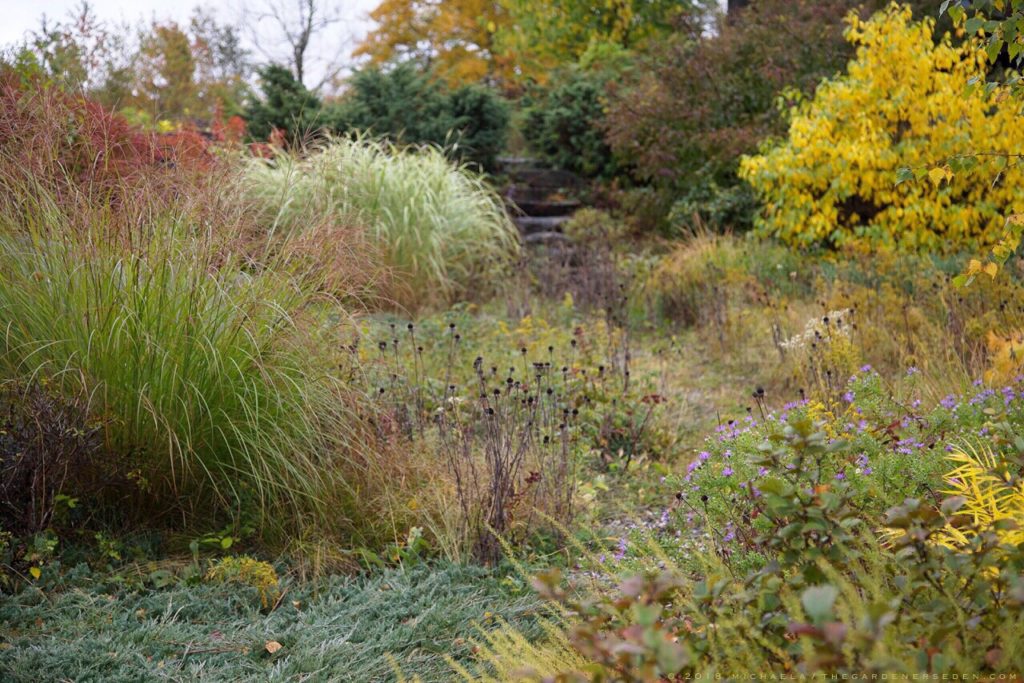 A Different Angle on the Meadow Walk Reveals How Layers of Trees, Shrubs and Perennials Vary the Visual Experience —Color, Texture, Form— Leading Down the Path, Toward the Secret Garden Stairs.
A Different Angle on the Meadow Walk Reveals How Layers of Trees, Shrubs and Perennials Vary the Visual Experience —Color, Texture, Form— Leading Down the Path, Toward the Secret Garden Stairs.
…
Article and Images copyright Michaela at The Gardener’s Eden, all rights reserved. All content on this site, (with noted exceptions), is the property of The Gardener’s Eden and may not be used, reproduced or reposted elsewhere without written consent.
Do you enjoy visiting The Gardener’s Eden? You can help support this site by shopping through the affiliate-links here. A small percentage of each sale will be paid to The Gardener’s Eden, and will help with site maintenance and web hosting costs. Thank you!
.
